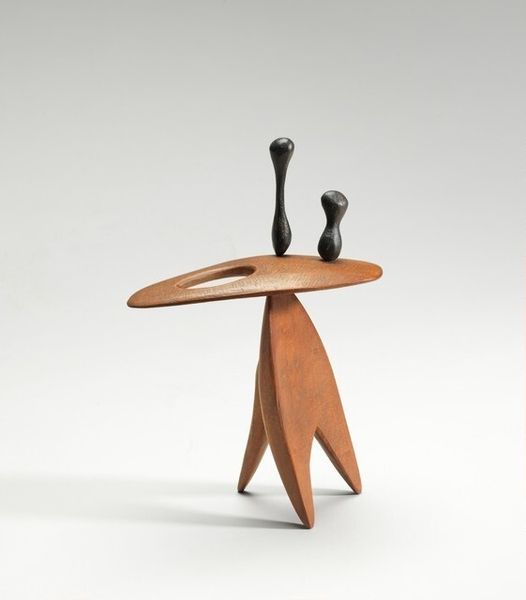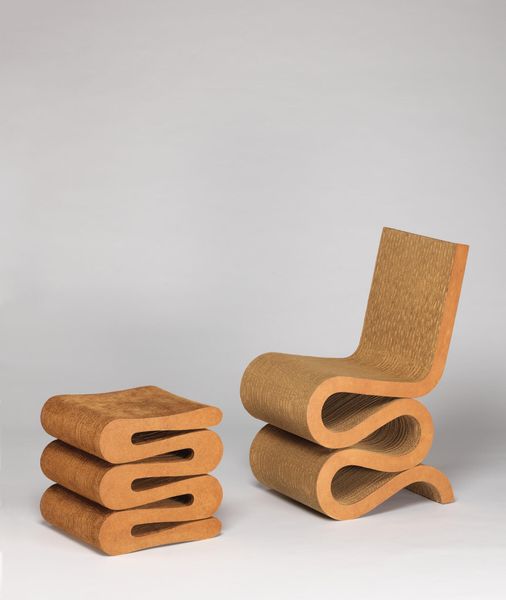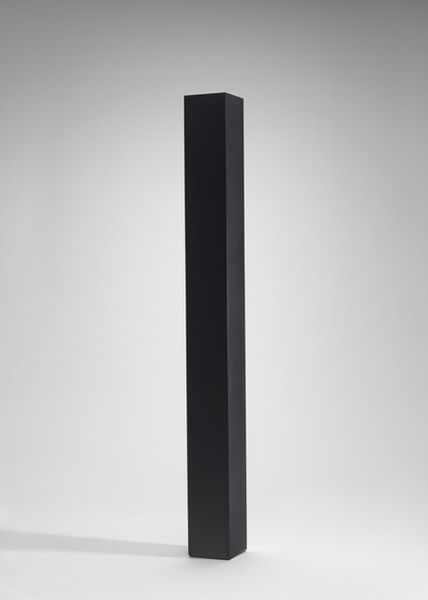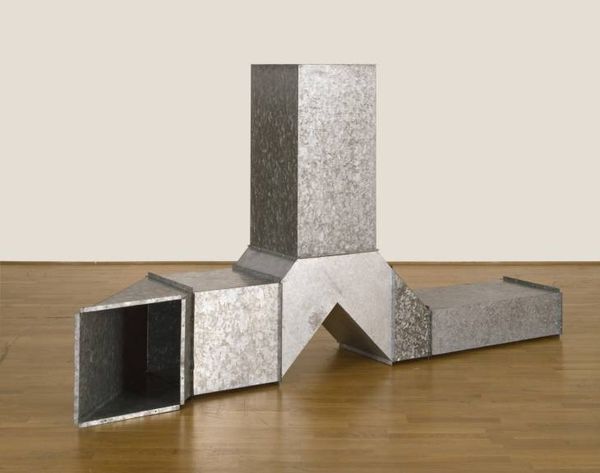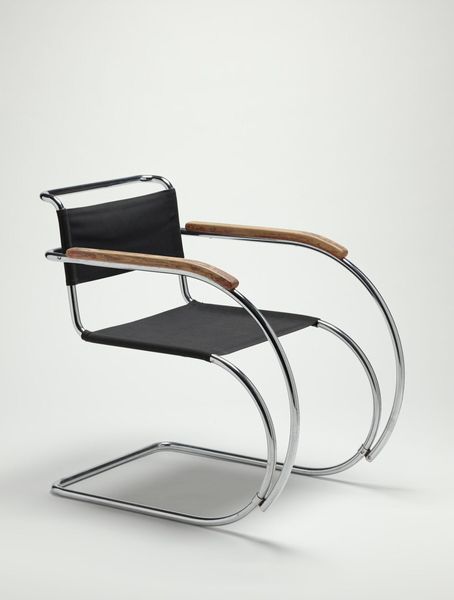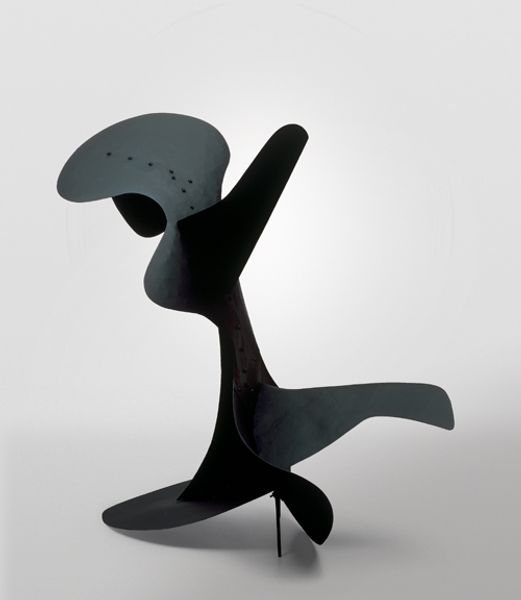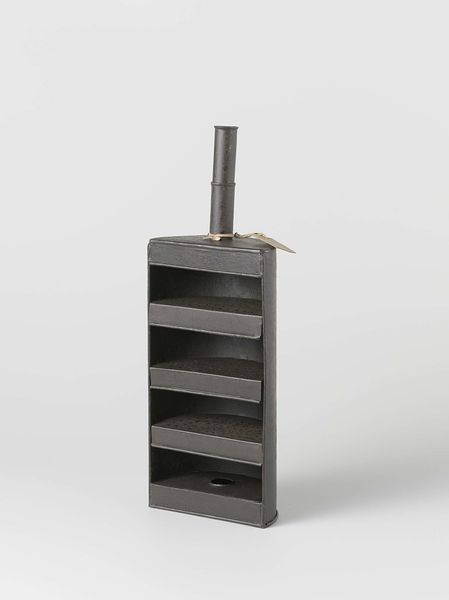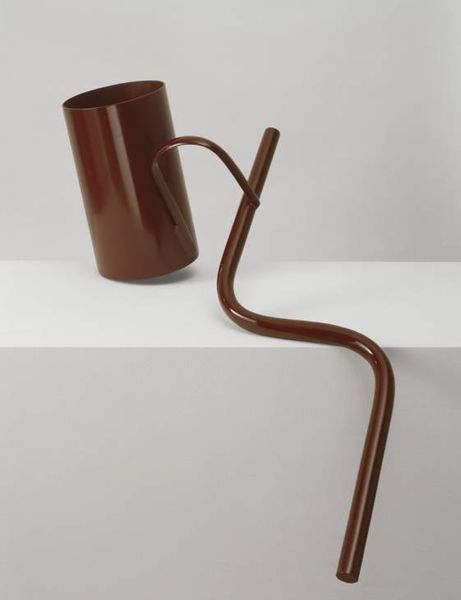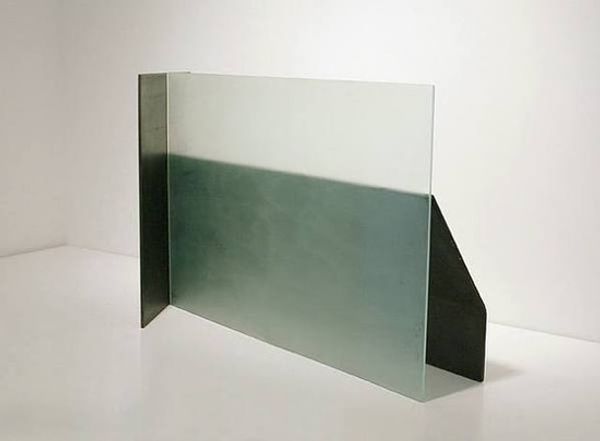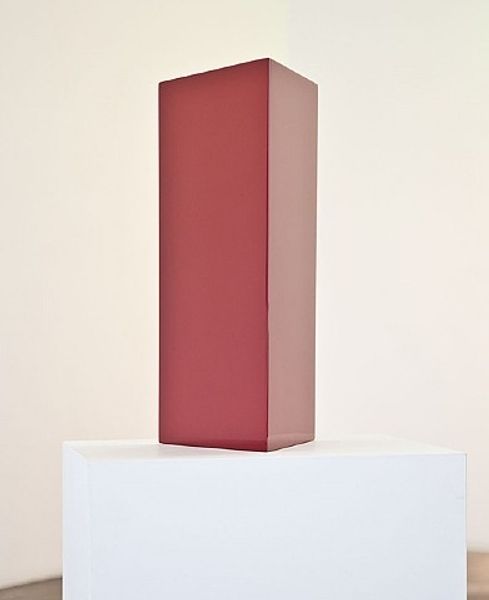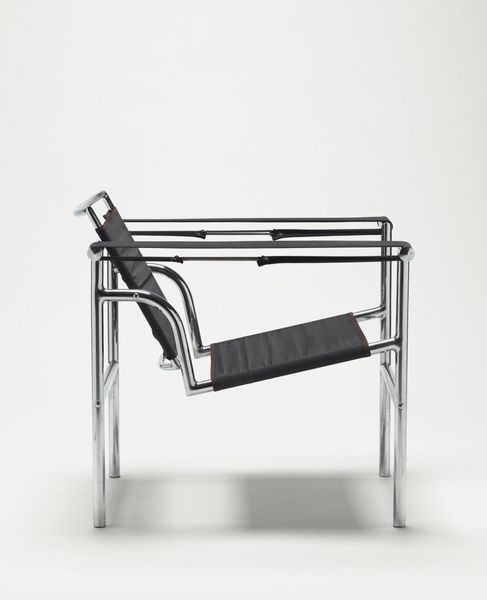
metal, sculpture
#
abstract-expressionism
#
3d model
#
3d printed part
#
minimalism
#
metal
#
plastic material rendering
#
virtual 3d design
#
product design photgrpaphy
#
geometric
#
sculpture
#
metallic object render
#
product mock up
#
3d modeling
#
graphic design product photography
#
product render
Copyright: Tony DeLap,Fair Use
Editor: "Tango Tangles," a sculpture by Tony DeLap, created in 1966. It's made of metal and looks almost like a pair of minimalist, bent bookends. They have this striking, simple form that feels both playful and industrial at the same time. What's your take on it? Curator: It’s interesting you pick up on that tension. Looking at "Tango Tangles" through a historical lens, especially in the context of the 1960s art scene, it becomes clear that DeLap is engaging with several different dialogues happening at the time. The stark geometry speaks to the rise of Minimalism, rejecting the emotional intensity of Abstract Expressionism. However, its almost playful quality and bright colors, were not common features of classic minimalism. How do you interpret that color choice and the title together? Editor: Maybe it’s a clue to push beyond just Minimalism? Like, it wants to acknowledge the formal precision but also suggest something more… human, maybe even a bit chaotic like a tango? Curator: Precisely! Consider also that California, where DeLap was working, was becoming a hub for experimentation with new materials and industrial processes. This piece shows this through its factory fabrication process and smooth, reflective surfaces. What does that say about art's role in a rapidly changing, technologically driven society? Editor: That art doesn't have to be this separate, precious thing, but can integrate itself into the everyday? I am so used to seeing abstraction through painting that I don't see its influences in 3d everyday objects like these. Curator: Exactly. Artists like DeLap were questioning those established boundaries. By embracing industrial techniques and materials, they opened art up to new possibilities for meaning and engagement. It wasn’t just about aesthetic purity but reflecting the social and technological landscape around them. Editor: Wow, I am re-considering my earlier impressions of Minimalism as just about geometric shapes. Curator: That’s the power of placing a work within its broader context! Hopefully this work encourages viewers to examine their expectations about form, fabrication and art's social role.
Comments
No comments
Be the first to comment and join the conversation on the ultimate creative platform.
